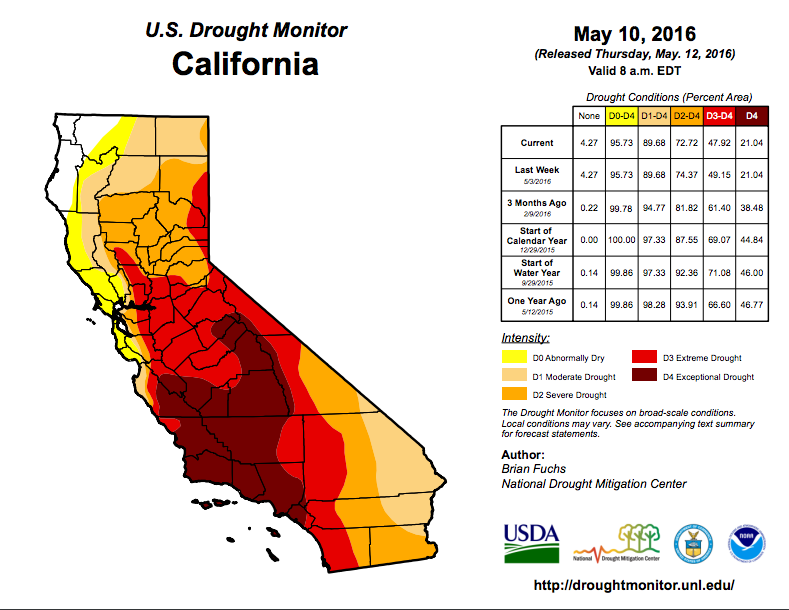California Proposal Would Shift More Control Over Water Conservation to Suppliers

Shutterstock
The move comes as the state has experienced wetter weather than last year. But drought conditions remain.
With a heartier snowpack in California’s mountains compared to the historically low levels last year, officials there are expected to consider this week whether to grant utilities and other suppliers of water to urban areas greater control over how much water they conserve.
Under a proposal scheduled to come before California’s State Water Resources Control Board on Wednesday, mandatory state water usage standards, imposed on suppliers about 11 months ago, would be replaced. Instead suppliers would develop their own guidelines based on the amount of water they have at their disposal. Each would need to certify they are conserving at a rate that would enable them to make it through three dry years, while maintaining adequate water delivery.
Putting the revised guidelines in place could benefit some suppliers financially, because higher levels of water usage have the potential to boost their revenues.
Giving a nod of approval to the proposal coming before the board, Timothy Quinn, executive director of the Association of California Water Agencies, said in a statement last Monday that it “reflects improved conditions and provides a more appropriate level of local authority and decision making over water management.” Quinn added that, “while the statewide drought is not over, it is time to better match conservation levels with local water supply conditions.”
Last April, Gov. Jerry Brown issued an executive order that, among other things, directed the control board to impose restrictions on suppliers to cut statewide drinkable water usage, in urban areas, by 25 percent through February 2016. Under emergency regulations later adopted, individual suppliers had to achieve usage reductions ranging from 4 to 36 percent.
There are about 400 urban water suppliers in California. Among them are entities such as districts, municipalities and companies.
Although less severe than conditions there last year at this time, varying degrees of drought persist across most of California. Snow conditions were between 33 and 54 percent of normal across the Sierra Nevada mountains as of May 13.


Mountain snowpack is important because it acts as a reservoir of sorts, providing water throughout the year as it melts during warmer months and flows into streams and rivers.
On Monday, May 9, Brown issued a new executive order, which makes permanent some drought-related measures the state has previously put in place.
These include prohibitions on spraying off sidewalks, washing cars with hoses unequipped with shutoff nozzles, and watering lawns within 48 hours of measurable rainfall. The order also calls for urban water suppliers to issue monthly reports on use, conservation and enforcement.
According to the governor’s office, California cut water use by nearly 24 percent between June 2015 and March 2016, compared to the same months in 2013.
Analysts at Fitch Ratings, in a notice issued Friday, said that if California’s water board approves the revised conservation standards it plans to consider this week, some suppliers would likely see a quick rise in water sales. That’s in contrast to a drop in sales that occurred when last year’s regulations took effect.
Despite declines in usage, suppliers have generally weathered the drought fairly well, according to Fitch, with little movement in credit ratings.
The notice from the ratings agency also expressed doubt that water usage would return to pre-drought levels.
During March, 71 percent of urban water suppliers, or 282, were within 1 percentage point of meeting state conservation standards, according to figures released by the water board. Only four were over 15 percentage points outside of those benchmarks.
Average statewide, residential water use was about 66 gallons per-person, per-day in March, the second lowest rate recorded since the onset of mandatory conservation measures last year.
Bill Lucia is a Reporter for Government Executive’s Route Fifty.
NEXT STORY: Schools Are Put on Federal Notice to Respect Transgender Rights






